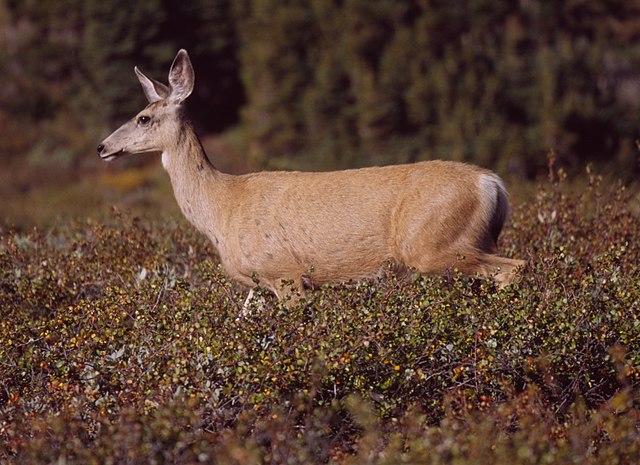Constantine Samuel Rafinesque
Constantine Samuel Rafinesque-Schmaltz was a French early 19th-century polymath born near Constantinople in the Ottoman Empire and self-educated in France. He traveled as a young man in the United States, ultimately settling in Ohio in 1815, where he made notable contributions to botany, zoology, and the study of prehistoric earthworks in North America. He also contributed to the study of ancient Mesoamerican linguistics, in addition to work he had already completed in Europe.
The mule deer is one of many species first named by Rafinesque.
The genus Rafinesquia was named in Rafinesque's honor.
Atlantic Journal (1832–1833)
Many pre-Columbian cultures in North America were collectively termed "Mound Builders", but the term has no formal meaning. It does not refer to specific people or archaeological culture but refers to the characteristic mound earthworks that indigenous peoples erected for an extended period of more than 5,000 years. The "Mound Builder" cultures span the period of roughly 3500 BCE to the 16th century CE, including the Archaic period, Woodland period, and Mississippian period. Geographically, the cultures were present in the region of the Great Lakes, the Ohio River Valley, Florida, and the Mississippi River Valley and its tributary waters.
Monks Mound, built c. 950–1100 CE and located at the Cahokia Mounds UNESCO World Heritage Site near Collinsville, Illinois, is the largest pre-Columbian earthwork in America north of Mesoamerica.
A mound diagram of the platform mound showing the multiple layers of mound construction, mound structures such as temples or mortuaries, ramps with log stairs, and prior structures under later layers, multiple terraces, and intrusive burials
Illustration of the Parkin site, thought to be the capital of the province of Casqui visited by de Soto
Engraving after Jacques le Moyne, showing the burial of a Timucua chief







